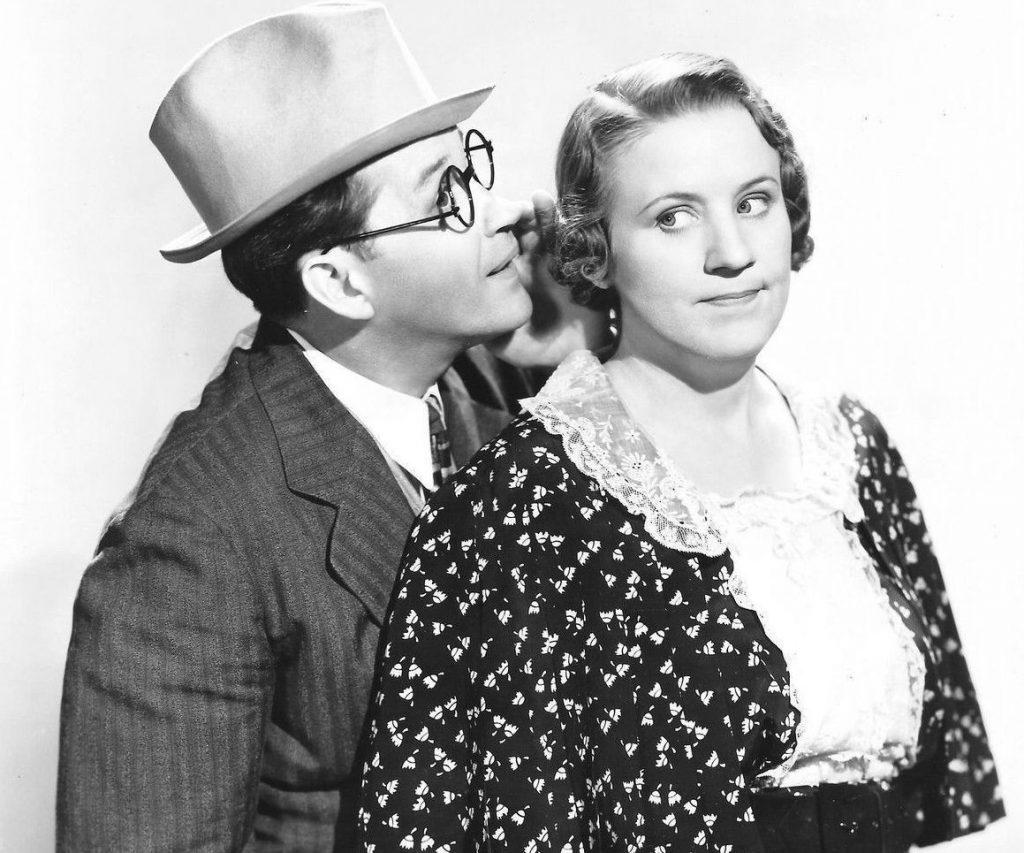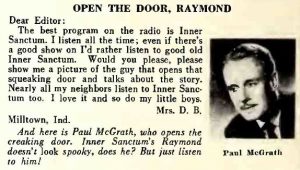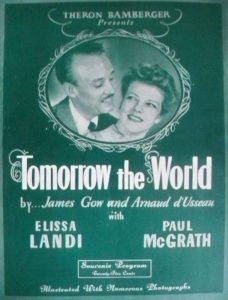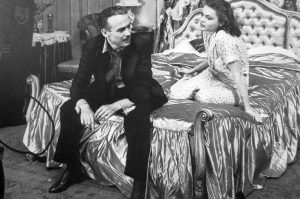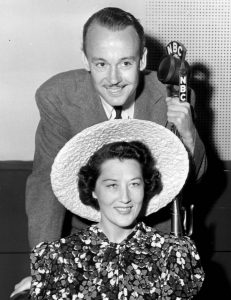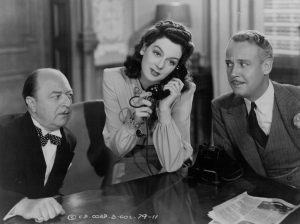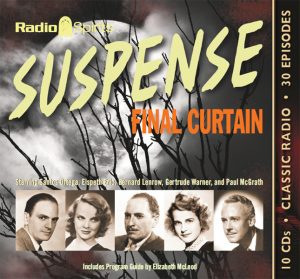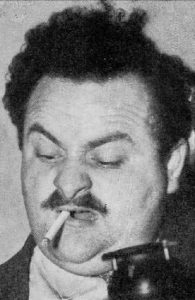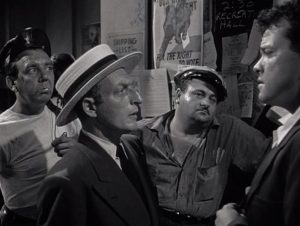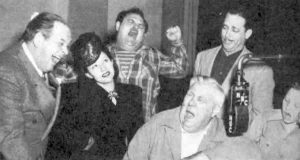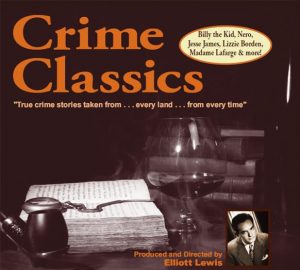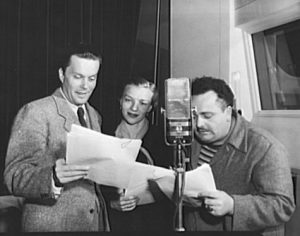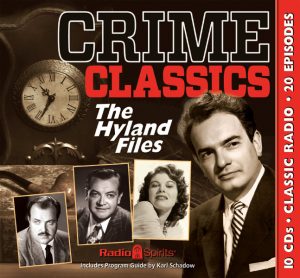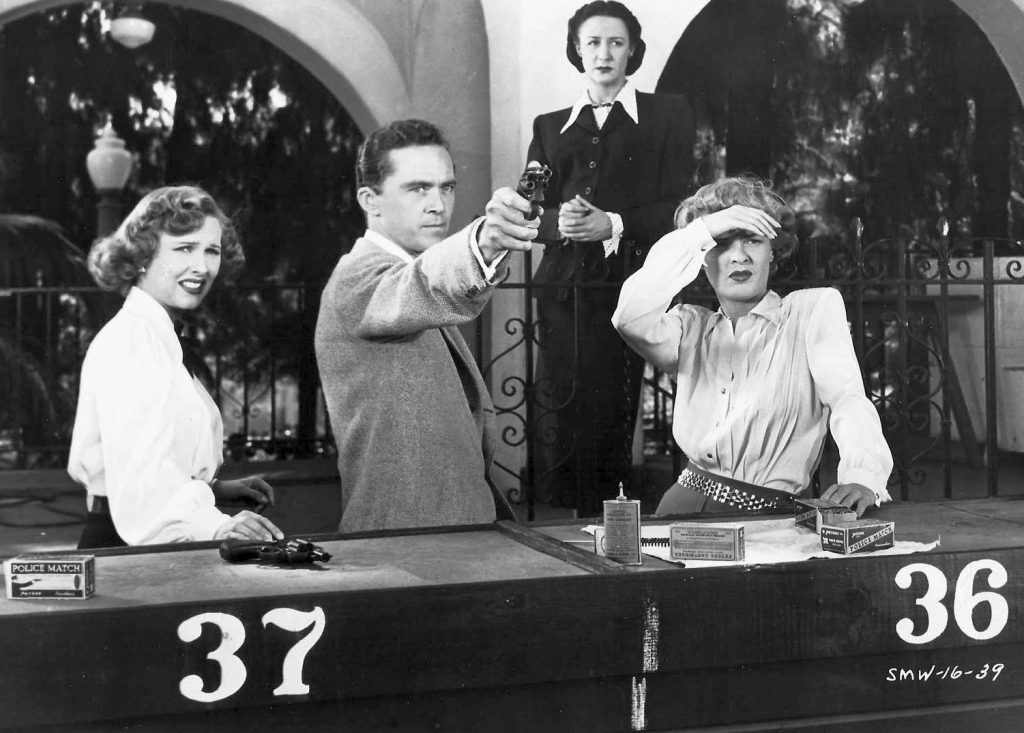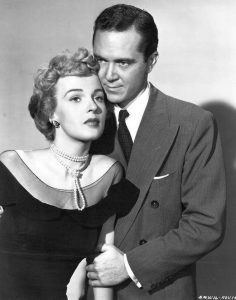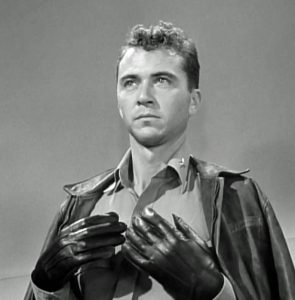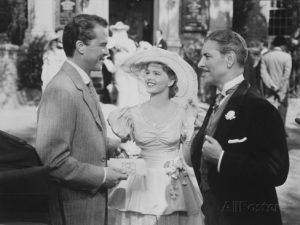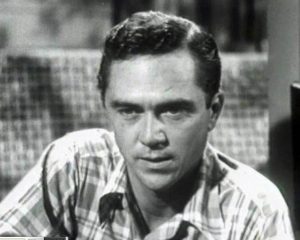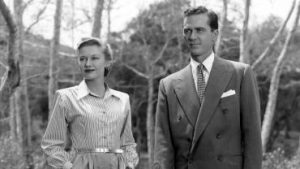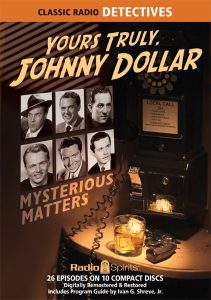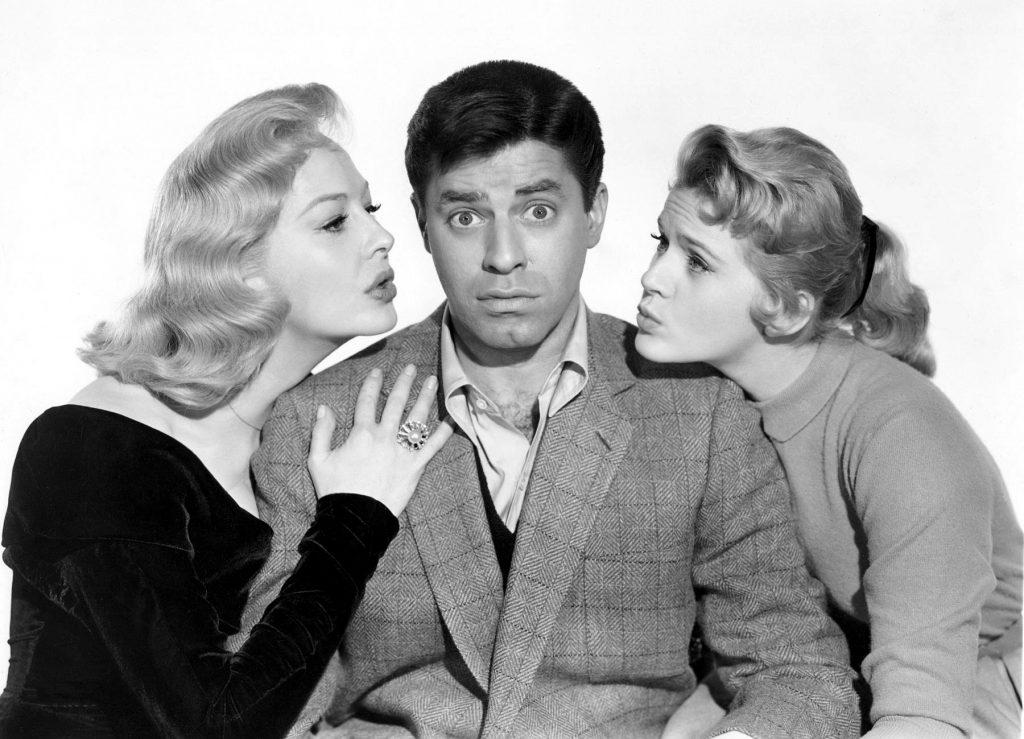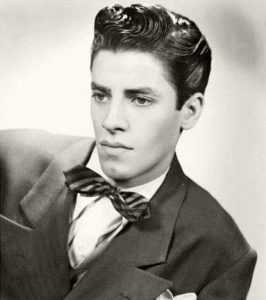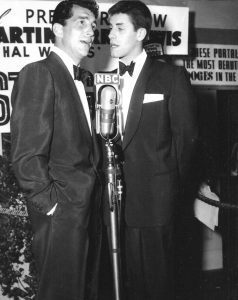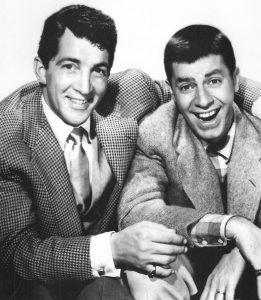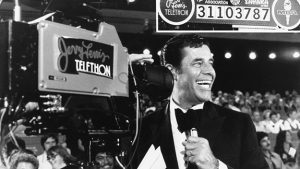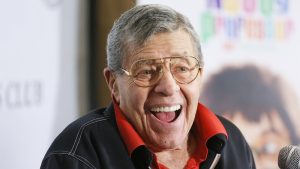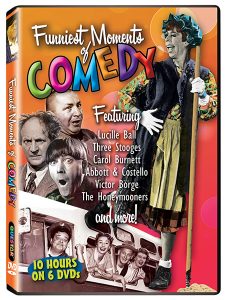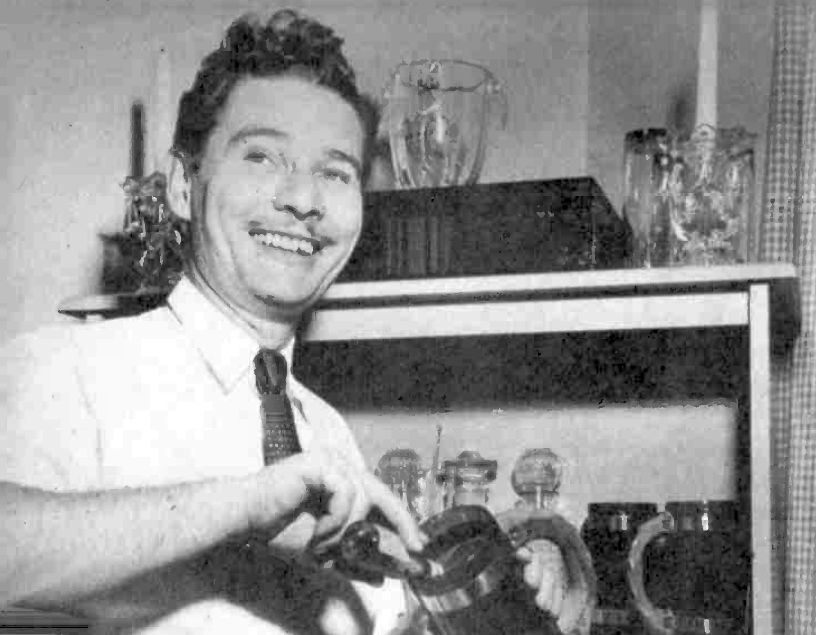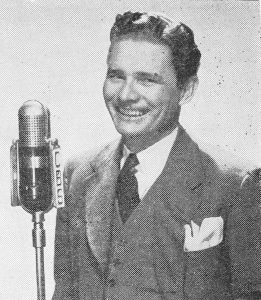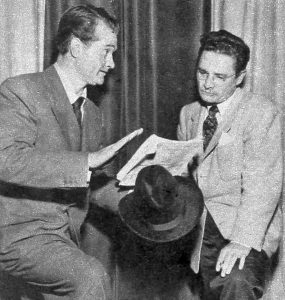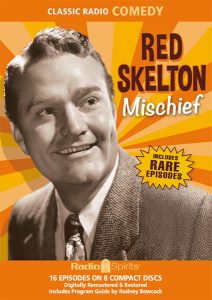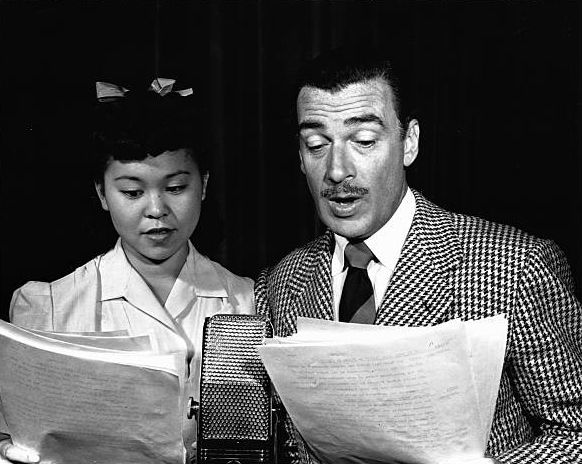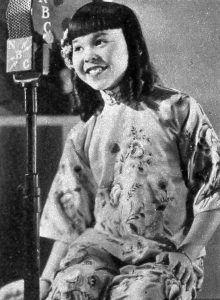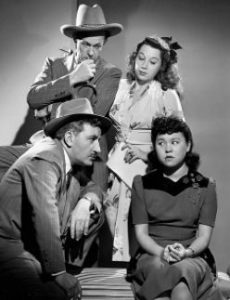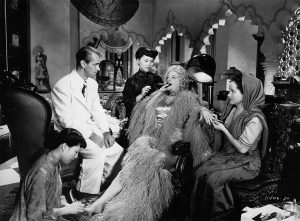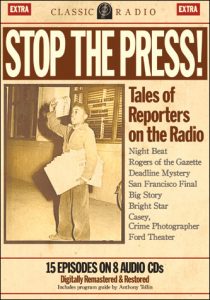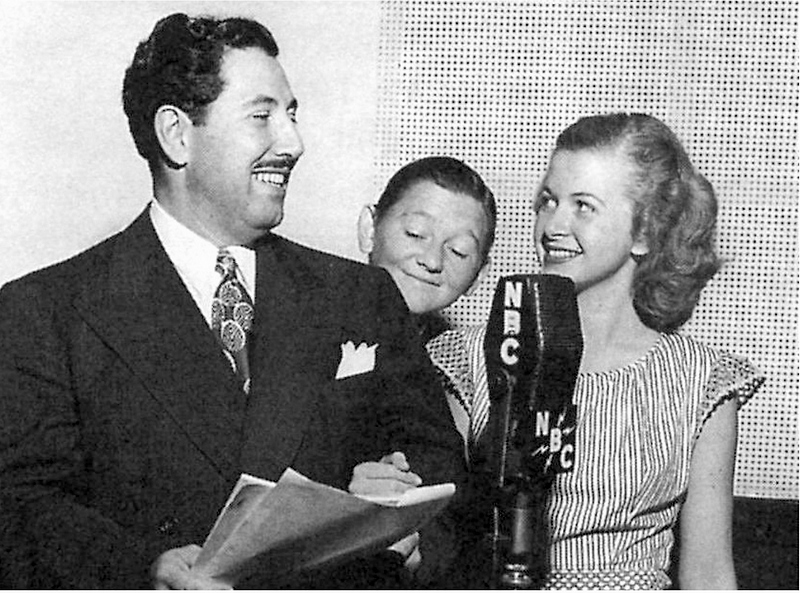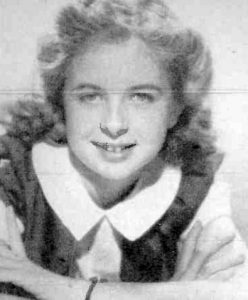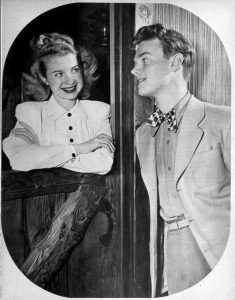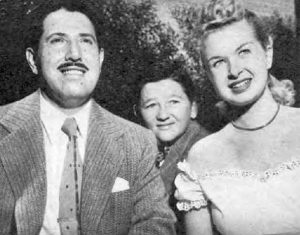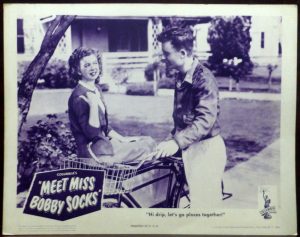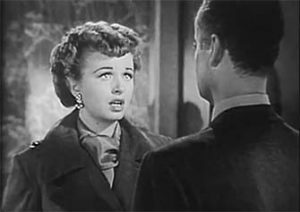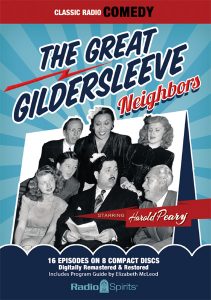Happy Birthday, Marian Jordan!
On a cold December night in 1915, young Marian Driscoll—born on this date in Peoria, Illinois in 1898—had no idea that after that evening’s choir practice at St. John’s Catholic Church, a lively jig that she danced during a “social period” would attract the attention of a young man named James Jordan. Jim became quite taken with the Irish colleen and asked a friend of his to introduce him to the fetching teenager because…well, Jim was a bit on the bashful side. The two youngsters chatted after the introductions were made and found out that they both shared a love of music. But it took shy young Jim a week to work up the nerve to ask Marian out; he eventually found the courage and the duo went out that New Year’s Eve. It’s fortunate for us that Jim did, too…for he and Marian would eventually tie the knot—and become one of radio’s most beloved comedy couples: Fibber McGee & Molly.
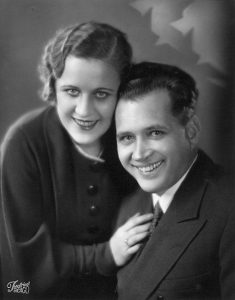 Marian’s father mined coal for a living to support his four daughters (including Marian) and nine sons. She attended school at The Academy of Our Lady (her future husband’s school was right across the street). In addition to her classes, Driscoll made excellent use of her musical talents—Marian had a beautiful contralto voice and was quite proficient on both the piano and violin. It was after inviting Jim to one of her piano recitals (shortly after their December 1915 meeting) that Marian realized she was very much in love with her bashful suitor. Jim had even spent $2.50 on a bouquet of roses…at a time when he was pulling down eight dollars a week…and they started making plans to wed after she graduated high school. Her parents weren’t too enthused about Marian marrying Jim – largely due to his ambition to be an entertainer – so he tried out a variety of different jobs, including warehouse clerk and mail carrier, etc. But when his big break came (as a tenor singer with a Chicago vaudeville act), he took it. Life on the road was difficult for Jim, who missed Marian terribly…and he would eventually return to Peoria to ask for her hand in marriage. The joyous event took place on August 31, 1918.
Marian’s father mined coal for a living to support his four daughters (including Marian) and nine sons. She attended school at The Academy of Our Lady (her future husband’s school was right across the street). In addition to her classes, Driscoll made excellent use of her musical talents—Marian had a beautiful contralto voice and was quite proficient on both the piano and violin. It was after inviting Jim to one of her piano recitals (shortly after their December 1915 meeting) that Marian realized she was very much in love with her bashful suitor. Jim had even spent $2.50 on a bouquet of roses…at a time when he was pulling down eight dollars a week…and they started making plans to wed after she graduated high school. Her parents weren’t too enthused about Marian marrying Jim – largely due to his ambition to be an entertainer – so he tried out a variety of different jobs, including warehouse clerk and mail carrier, etc. But when his big break came (as a tenor singer with a Chicago vaudeville act), he took it. Life on the road was difficult for Jim, who missed Marian terribly…and he would eventually return to Peoria to ask for her hand in marriage. The joyous event took place on August 31, 1918.
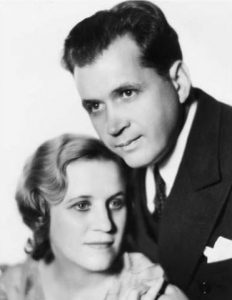 No sooner had they become Mr. and Mrs. Jim Jordan than Jim got a letter from his Uncle Sam…and he soon found himself in WWI France, sidelined with dysentery. Marian, in the meantime, kept “the home fires burning” by eking out a living teaching piano and performing at church services (she was often pressed into service to sing at weddings). Jim would soon return home and, in the manner of Fibber McGee, tried out another series of jobs…before succumbing once again to the itch for performing. Jordan thought that if Marian joined him they might make a little more noise on stage as a duo. While vaudeville provided an excellent training ground for the Jordans’ show business aspirations, it was not conducive to marriage stability. Marian took breaks from “the road” to give birth to their daughter Kathryn (in 1920) and son Jim, Jr. (1923). Jim, though he began with enthusiasm, would return home broke, taking on various odds-and-ends occupations until the family could maintain a sense of solvency.
No sooner had they become Mr. and Mrs. Jim Jordan than Jim got a letter from his Uncle Sam…and he soon found himself in WWI France, sidelined with dysentery. Marian, in the meantime, kept “the home fires burning” by eking out a living teaching piano and performing at church services (she was often pressed into service to sing at weddings). Jim would soon return home and, in the manner of Fibber McGee, tried out another series of jobs…before succumbing once again to the itch for performing. Jordan thought that if Marian joined him they might make a little more noise on stage as a duo. While vaudeville provided an excellent training ground for the Jordans’ show business aspirations, it was not conducive to marriage stability. Marian took breaks from “the road” to give birth to their daughter Kathryn (in 1920) and son Jim, Jr. (1923). Jim, though he began with enthusiasm, would return home broke, taking on various odds-and-ends occupations until the family could maintain a sense of solvency.
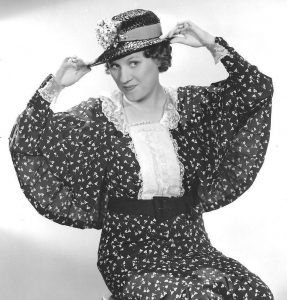 It would be no exaggeration to state that radio provided a permanency for this married couple that vaudeville couldn’t offer…the only problem was that, in its infancy, performing on radio didn’t pay much. In 1924, Jim’s brother Byron (affectionately known as “Mickey”) goaded him and Marian into performing on Chicago radio station WIBO. (Mickey believed that the Jordans could do a better job than the act that was on the air.) They were so well-received that the station hired them to perform (as The O’Henry Twins) at $35 a week. Between 1925 and 1927, the couple worked an average of three radio stations a night. In October of 1927, they signed a contract with Chicago’s WENR for $60 weekly. During their time on WENR, Jim and Marian appeared on The Air Scouts, Grab Bag, and Luke and Mirandy. 1929 saw the Jordans debut in The Smith Family, an early daytime drama that some radio historians consider the first “soap opera.”
It would be no exaggeration to state that radio provided a permanency for this married couple that vaudeville couldn’t offer…the only problem was that, in its infancy, performing on radio didn’t pay much. In 1924, Jim’s brother Byron (affectionately known as “Mickey”) goaded him and Marian into performing on Chicago radio station WIBO. (Mickey believed that the Jordans could do a better job than the act that was on the air.) They were so well-received that the station hired them to perform (as The O’Henry Twins) at $35 a week. Between 1925 and 1927, the couple worked an average of three radio stations a night. In October of 1927, they signed a contract with Chicago’s WENR for $60 weekly. During their time on WENR, Jim and Marian appeared on The Air Scouts, Grab Bag, and Luke and Mirandy. 1929 saw the Jordans debut in The Smith Family, an early daytime drama that some radio historians consider the first “soap opera.”
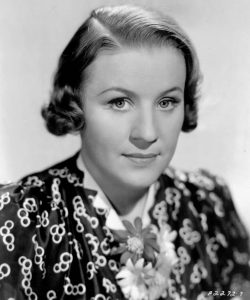 The Jordans would appear regularly on such series as Kaltenmyer’s Kindergarten and The Breakfast Club…but Marian and Jim’s most successful program on Chicago radio would premiere on March 2, 1931: Smackout. This six-day-a-week quarter-hour featured Jim as Luke Gray, a garrulous general store owner who was always “smack out” of items requested by his clientele. Marian supported her husband with a variety of quirky characters, demonstrating her versatility and vocal talents. Notably, she played a little girl named “Teeny,” who liked to tease Luke about his propensity for stretching the truth. If this is starting to sound a little familiar…it should; Smackout was a blueprint for the wildly successful Fibber McGee & Molly. In fact, the writer on Smackout was none other than longtime Fibber scribe Don Quinn. It was Smackout, of course, that brought Jim and Marian to the attention of the Johnson’s Wax people when they were looking to put a new program on the air on NBC. The Johnson’s Wax Program with Fibber McGee & Molly premiered on April 16, 1935. After a slow start, it became one of radio’s most popular comedy programs.
The Jordans would appear regularly on such series as Kaltenmyer’s Kindergarten and The Breakfast Club…but Marian and Jim’s most successful program on Chicago radio would premiere on March 2, 1931: Smackout. This six-day-a-week quarter-hour featured Jim as Luke Gray, a garrulous general store owner who was always “smack out” of items requested by his clientele. Marian supported her husband with a variety of quirky characters, demonstrating her versatility and vocal talents. Notably, she played a little girl named “Teeny,” who liked to tease Luke about his propensity for stretching the truth. If this is starting to sound a little familiar…it should; Smackout was a blueprint for the wildly successful Fibber McGee & Molly. In fact, the writer on Smackout was none other than longtime Fibber scribe Don Quinn. It was Smackout, of course, that brought Jim and Marian to the attention of the Johnson’s Wax people when they were looking to put a new program on the air on NBC. The Johnson’s Wax Program with Fibber McGee & Molly premiered on April 16, 1935. After a slow start, it became one of radio’s most popular comedy programs.
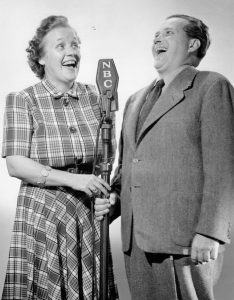 Because Marian Jordan was considered such an integral part of the success of Fibber McGee & Molly, it’s often difficult to separate her from her equally famous husband. But shortly after the pair made their first motion picture in Hollywood (1937’s This Way Please), Marian’s health deteriorated. She was forced to check into a Chicago sanitarium for a long period of rest while Jim carried on with the radio program, which was renamed in her absence Fibber McGee & Company. Many doubted that Marian would ever return to the show, but in April of 1939 she was warmly welcomed back…and the show became better than ever. In the 1940s, Fibber McGee & Molly was often ranked at the top of radio’s comedy programs and the show itself became one of the biggest morale boosters during WW2.
Because Marian Jordan was considered such an integral part of the success of Fibber McGee & Molly, it’s often difficult to separate her from her equally famous husband. But shortly after the pair made their first motion picture in Hollywood (1937’s This Way Please), Marian’s health deteriorated. She was forced to check into a Chicago sanitarium for a long period of rest while Jim carried on with the radio program, which was renamed in her absence Fibber McGee & Company. Many doubted that Marian would ever return to the show, but in April of 1939 she was warmly welcomed back…and the show became better than ever. In the 1940s, Fibber McGee & Molly was often ranked at the top of radio’s comedy programs and the show itself became one of the biggest morale boosters during WW2.
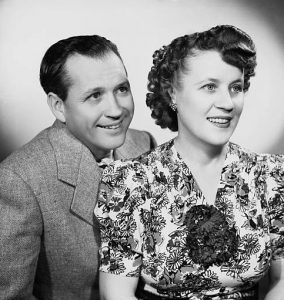 Marian and Jim Jordan performed as Fibber McGee & Molly from 1935 to 1956 (the years between 1953 and 1956 their show was a five-day-a-week quarter-hour). They kept the characters alive from 1957 to 1959 by doing short skits as the couple on NBC’s Monitor. The Jordans made guest appearances on shows headlined by the likes of Amos ‘n’ Andy (Freeman Gosden and Charles Correll), Edgar Bergen & Charlie McCarthy (with whom they made two motion pictures, Look Who’s Laughing [1941] and Here We Go Again [1942]), Bing Crosby, Dorothy Lamour, Lum & Abner, and Dinah Shore. Even when guesting on such programs as The Big Show, Command Performance, Family Theatre, G.I. Journal, The Great Gildersleeve (a sitcom spin-off from their own series), The Gulf/Lady Esther Screen Guild Theatre, and The Lux Radio Theatre, Marian and Jim usually performed in character. A notable exception was heard on February 3, 1949, when a Suspense broadcast, “Backseat Driver,” allowed them to stretch their acting muscles a bit. (The couple did such a great job that they did an encore performance on February 22, 1951.)
Marian and Jim Jordan performed as Fibber McGee & Molly from 1935 to 1956 (the years between 1953 and 1956 their show was a five-day-a-week quarter-hour). They kept the characters alive from 1957 to 1959 by doing short skits as the couple on NBC’s Monitor. The Jordans made guest appearances on shows headlined by the likes of Amos ‘n’ Andy (Freeman Gosden and Charles Correll), Edgar Bergen & Charlie McCarthy (with whom they made two motion pictures, Look Who’s Laughing [1941] and Here We Go Again [1942]), Bing Crosby, Dorothy Lamour, Lum & Abner, and Dinah Shore. Even when guesting on such programs as The Big Show, Command Performance, Family Theatre, G.I. Journal, The Great Gildersleeve (a sitcom spin-off from their own series), The Gulf/Lady Esther Screen Guild Theatre, and The Lux Radio Theatre, Marian and Jim usually performed in character. A notable exception was heard on February 3, 1949, when a Suspense broadcast, “Backseat Driver,” allowed them to stretch their acting muscles a bit. (The couple did such a great job that they did an encore performance on February 22, 1951.)
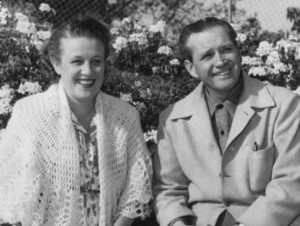 Marian and Jim were unique in that, while they did bring their famous radio characters to film (such as 1944’s Heavenly Days), they were content to remain creatures of the aural medium. The fact that Marian’s health continued to be chancy with the passing years (doctors had advised her many times to take a long rest…but she didn’t want to disappoint fans) scotched any idea of bringing Wistful Vista’s favorite couple to the small screen. When Fibber McGee & Molly finally did come to TV in the fall of 1959, Marian Jordan had already been diagnosed with inoperable cancer. She would leave this world for a better one on April 7, 1961…and many old-time radio fans were saddened by the loss of a woman they considered a trusted friend.
Marian and Jim were unique in that, while they did bring their famous radio characters to film (such as 1944’s Heavenly Days), they were content to remain creatures of the aural medium. The fact that Marian’s health continued to be chancy with the passing years (doctors had advised her many times to take a long rest…but she didn’t want to disappoint fans) scotched any idea of bringing Wistful Vista’s favorite couple to the small screen. When Fibber McGee & Molly finally did come to TV in the fall of 1959, Marian Jordan had already been diagnosed with inoperable cancer. She would leave this world for a better one on April 7, 1961…and many old-time radio fans were saddened by the loss of a woman they considered a trusted friend.
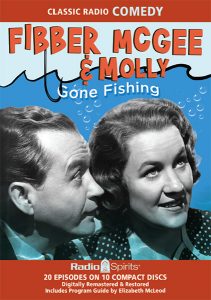 I don’t know about you…but all I have to hear is Marian Jordan’s warm and welcoming “How you do, I’m sure!” and whatever funk I happened to be in is scattered to the four winds and beyond. Radio Spirits has just the tonic for such blues, with Fibber McGee & Molly collections like Cleaning the Closet (with liner notes by yours truly), Gone Fishing, and Wistful Vista. (Be sure to keep an eye out for another upcoming Radio Spirits Fibber McGee & Molly collection…I know this because I wrote the booklet for that as well.) You can also spend holiday time with Wistful Vista’s famous residents in our Yuletide compendiums Christmas Radio Classics, Radio’s Christmas Celebrations, and The Voices of Christmas Past. Last but not least…check out the McGees in our potpourri offerings of Comedy Goes West, Great Radio Comedy, and Radio Classics: Selected by Greg Bell. Heavenly days–that’s a lot of listening!
I don’t know about you…but all I have to hear is Marian Jordan’s warm and welcoming “How you do, I’m sure!” and whatever funk I happened to be in is scattered to the four winds and beyond. Radio Spirits has just the tonic for such blues, with Fibber McGee & Molly collections like Cleaning the Closet (with liner notes by yours truly), Gone Fishing, and Wistful Vista. (Be sure to keep an eye out for another upcoming Radio Spirits Fibber McGee & Molly collection…I know this because I wrote the booklet for that as well.) You can also spend holiday time with Wistful Vista’s famous residents in our Yuletide compendiums Christmas Radio Classics, Radio’s Christmas Celebrations, and The Voices of Christmas Past. Last but not least…check out the McGees in our potpourri offerings of Comedy Goes West, Great Radio Comedy, and Radio Classics: Selected by Greg Bell. Heavenly days–that’s a lot of listening!

